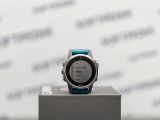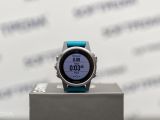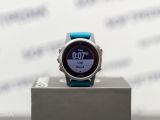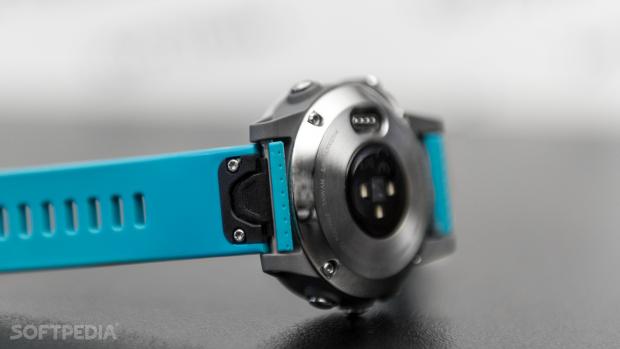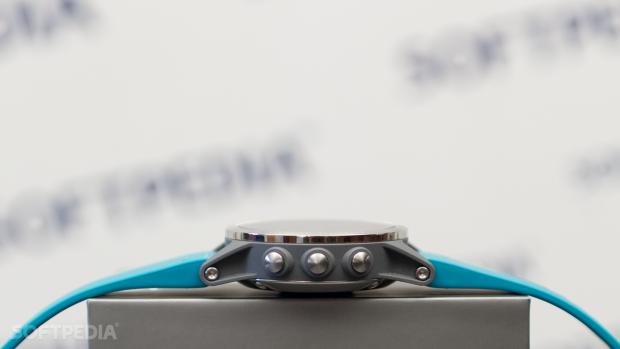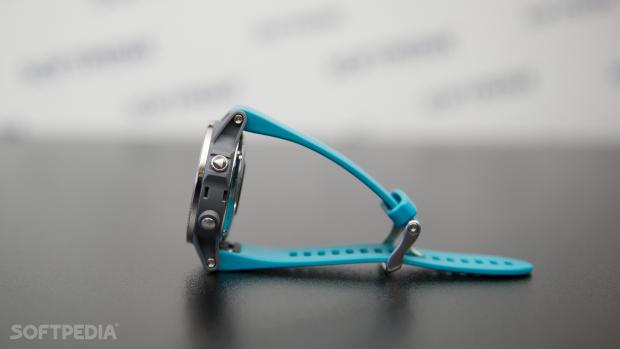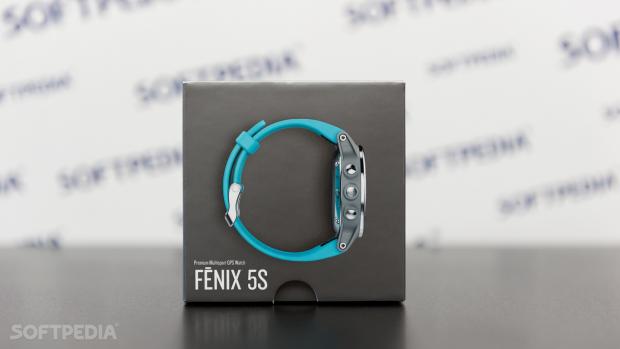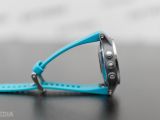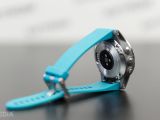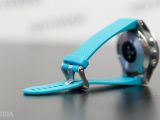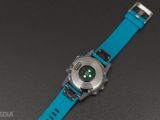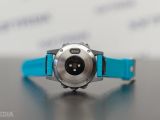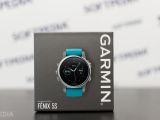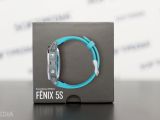Garmin is historically a company that’s been all about fitness and activity tracking, so when buying one of its devices, you pretty much know what to expect.
The recently-released fenix 5 series makes absolutely no exception to the rule and puts the focus entirely on fitness, but without forgetting features that are important to buyers today, including smartwatch capabilities when connected to a smartphone.
This is something that the majority of wearable manufacturers tried to obtain, though it’s been proved that mixing smartwatch and activity tracking features isn’t always the easiest thing to do. In most of the cases, devices end up making a smaller or bigger compromise, lacking functionality exactly in those places where users expect the least.
The Garmin fenix 5, however, has been clearly designed with activity tracking in mind, and to better tackle the needs of customers, the company designed three different models with a little something for everyone.
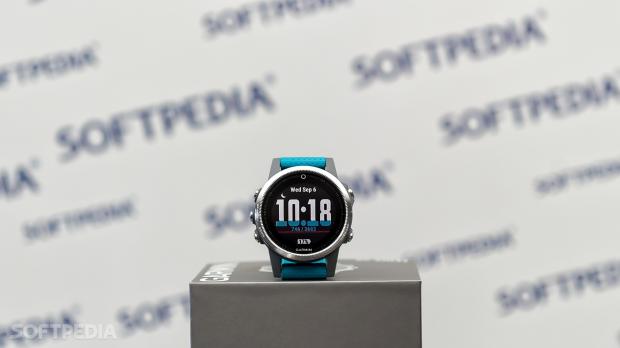
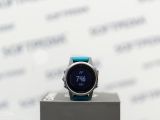

The smallest model is the 42mm fenix 5S, which is primarily targeted at women and people with smaller wrists (like me), while the middle configuration is the fenix 5 that features a 47mm case. The 51mm version is called fenix 5X and is only recommended to those with huge wrists because otherwise, it looks like carrying a can on your wrist all the time. Each can be ordered as Sapphire Edition, which includes a scratch-resistant sapphire lens and Wi-Fi connectivity.
What I’m testing is the 42mm version (I know, I know, I have small wrists, ha-ha!) in silver with a turquoise silicon band, which I actually love but can be replaced with several other colors like white and black if you want to.
The device is seriously comfortable, and it’s all thanks to its traditional watch design. If I were to compare it to another smartwatch, I’d say it’s Apple Watch-comfortable, especially because both have small bumps on the back in the place where the HR sensors reside. The bump is there to make sure the watch can get accurate readings of your pulse.
“Seriously comfortable.”
The round face of the watch is encased in a fiber-reinforced polymer body covered by a stainless-steel bezel as part of pretty premium combination that certainly feels sleek and modern. The watch doesn’t look cheap by any means, and it’s not at all supposed to given that it costs $599.
There are five buttons that let you interact with the watch because there is no touchscreen – this is actually one of the drawbacks, especially when it comes to browsing menus and controlling certain activities; but on the other hand, it pays off when it comes to battery life and sunlight readability.
The purpose of each button is engraved on the bezel, but despite this, it takes a while until you get used to everything and stop pressing buttons randomly like a newborn.
On the left, we have the light button which… turns on the light, as it happened on old Casio watches, plus the up and down scrolls that let you browse menus. On the right, there are the select and the back buttons.
Getting back to the screen, the fenix 5S uses a tiny 1.2-inch multicolor and transflective that Garmin absolutely loves because it uses it on pretty much the majority of wearables.
“The small resolution is not an issue.”
But truth be told, it’s hard to be impressed with it when looking at what the other smartwatches on the market right now are using, and it has a resolution of just 218x218 pixels. This is smaller than in the case of its bigger siblings, which have been upgraded to 240x240 pixels, a difference that you certainly won’t notice with the naked eye.
Not having a touchscreen is something that you might find difficult to adapt to at first, especially if you’re coming from an Apple Watch like I am. I’ve been using the Garmin for the past month and the first week it was quite a pain in the neck to start a workout, though after a few more days of swearing I finally got it right.
But this approach certainly pays off because what Garmin was aiming for was giving up on one of the biggest battery hogs right now on wearables and, at the same time, to gain other advantages like better readability in direct sunlight.
And it did achieve this, with the fenix 5S said to provide 12 days of battery life in smartwatch mode and 20 hours when used with a GPS – in real life, however, I got approximately 7 days of smartwatch, but couldn’t really test how much it lasted in GPS mode without risking my life working out for so long. The best I did was a 2-hour biking session that brought the battery level down by only 10 percent with GPS on.
And speaking of GPS, this is the point where everything goes crazy. The fenix 5S is undoubtedly the best fitness tracker at this point because it comes with absolutely everything you’ll ever expect to find in such a device, including GPS, Glonass, a heart rate monitor, a barometric altimeter, compass, gyroscope, accelerometer, thermometer, Bluetooth, Wi-Fi, notifications, music controls. Tired? You shouldn’t be because the list goes on with supported activities and features.
“It tracks eve-ry-thing.”
A step counter, a move bar, sleep monitoring (although limited), calories burned, floors climbed, distance traveled, intensity minutes, advanced workouts, V02 max, training effect (I’m taking a moment to breath), audio prompts, HR zones and alerts, HR calories, recovery time, heart rate while swimming, aaand the list goes on.
As for the supported activities, I’ll put it simple because it’s getting tiresome to do this the whole day: the fenix 5S supports the majority of common workouts like running and biking, as well as pool and open-water swimming, plus a series of less common activities such as stand up paddleboarding.
And the best of all, if your activity, let’s say doing pushups with a cat on your back, is not supported, you can actually create and configure it to have everything tracked and collected onto the device.
The most important information can be quickly accessed from the home screen by pressing the “down” button, so you can quickly see the last activity stats, step count, altimeter and barometer, most recent phone notifications, the weather conditions, HR, and the current training status.
The training status is something that I’ve found particularly useful because its purpose is to show you how fit you are based on the most recent readings. If you work out regularly, there’s a chance it’ll say you’re doing okay, but if you’re like me and work out 2 or 3 times a week and spend the rest of time on the couch with a PlayStation controller in hand, you might be encouraged to exercise more.
This is a feature that could play a pretty important role for those who are trying to improve their shape, and it goes hand in hand with an Insights feature that’s available in the Garmin Connect app available for iOS and Android (and which you need to install in order to make the most of the device and have the data synced).
“Excellent activity tracking, not so excellent smartwatch.”
Garmin uses data uploaded to the cloud (using Wi-Fi) to compare your data with others in the same age and gender category, providing some recommendations to let you know how you’re doing. As a result, you might be encouraged to exercise more or congratulated for exercising more than most people in a certain timeframe.
Just like the majority of activity trackers (and smartwatches), the Garmin fenix 5S also provides reminders to move when you’ve been sitting for too long. Honestly, I am not a big fan of this type of notifications since I spend most of my day sitting at the desk in front of a computer screen, but I do understand that for some people they’re extremely helpful.
In the case of the Garmin, however, I found this a little rude, but I guess they served their purpose very well this way because I actually stood up and moved for a few minutes, and not just for testing. The notification simply reads “Move!” (I always read this with the voice of my fifth grade math professor), while achieving the goal brings up a message that just says “Move bar cleared!.”
With the focus clearly on fitness, the Garmin fenix 5S does the same thing that the majority of activity trackers out there do and lose the focus a little bit on smartwatch capabilities. While it can pull notifications from the connected smartphone, that’s pretty much all about it, and interaction options are very limited.
Some say it’s wrong to expect a Garmin device to behave like an Apple Watch and work with notifications like a fully-featured smartwatch, but at $600, which is double the price you have to pay for the Apple device, such an expectation isn’t exactly crazy. And unfortunately, those who hoped to get both a smartwatch and an activity tracker in the same page might be a little disappointed here.
“Being lazy? Just "Move!"”
On the good side, pulling the weather forecast from the smartphone works pretty nice, and the mobile app that you can install on the device to sync data is also super-complex.
But unless you spend some time with the Garmin Connect app to discover where everything is hiding, you might have a really hard time figuring out where you are, mostly because Garmin couldn’t find a way to neatly organize all the information that the smartwatch collects and sends to your phone.
You can easily see basic information, like steps and workouts, by swiping through pages on the front screen of the app, but anything beyond that requires exploration that involves some prior experience with the app. This is something that’s valid in the case of the fenix 5S itself as well because reading the essential data is easy, but going further is something that you should only do when you have enough time.
As for watch faces, the fenix 5S actually surprised me. The store that you can configure in the Garmin Connect app lets you download and install faces on the device, with plenty of customization options, like colors and widgets (or complications for our fellow Apple Watch owners reading this). It takes some time to find a nice face, but there’s a lot to choose from, and as compared to the Apple Watch, which is still limited to the same boring faces, you feel like you’re in paradise when opening the store.
On the other hand, downloading, installing, and setting a new watch face takes unusually long, and sometimes enabling a new look fails because of causes that we couldn’t determine. In most of the cases, returning to the original watch face and then applying the new one did the magic.
The bottom line
The Garmin fenix 5S is without a doubt one of the best activity trackers available right now, and I really mean it. It has support for a wide variety of activities, it can track nearly everything, has built-in GPS and has a battery life that you can barely find on the market right now.
But if there’s something that I’d want to see improved on the fenix 5S, it’s the smartwatch side. At this point, Garmin’s device has the same problem as the majority of activity trackers on the market: due to the increased focus on fitness tracking, it loses smartwatch capabilities, and for some reason, it’s impossible to find a flawless mix these days.
Truth be told, the nature of mobile platforms, as it’s the case of the closed iOS, substantially limits its capabilities, and this is why notifications don’t come with too many interactive options.
But you certainly can’t be disappointed by the fenix 5S if you know what to expect from a Garmin product. Activity tracking is flawless and… (Apple Watch owners cover your eyes) it works in a way that Apple can only hope to achieve on a future model, despite Cupertino clearly putting a lot more effort into its Nike-branded smartwatches.
The fenix 5S does have its setbacks, like the less-intuitive user interface navigation and the lack of a touchscreen, but its good sides certainly compensate. It works with both Android and iOS, exports data to the Apple Health can track swimming, looks like a watch and supports interchangeable bands so you can wear it with various outfits, and is an excellent motivator to make you train like an athlete.
But is it worth the money? At nearly $600, the Garmin fenix 5S is without a doubt an expensive product, as it costs nearly twice more than an Apple Watch. For enthusiasts, however, it’s a small price to pay for a very capable product that can be their fitness companion day and night, night and day.
As a conclusion, keep in mind that above all, the fenix 5S is not the kind of device that you can purchase to show others just how cool you are. That’s what the Apple Watch is for. The Garmin fenix 5S is aimed at a niche that’s made of people who put fitness among their top priorities 24/7.
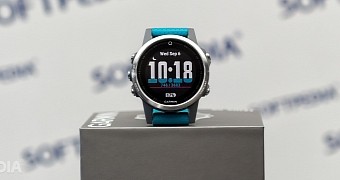
 14 DAY TRIAL //
14 DAY TRIAL // 